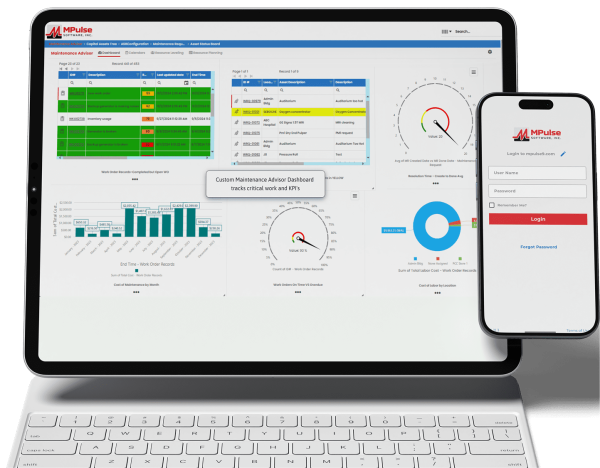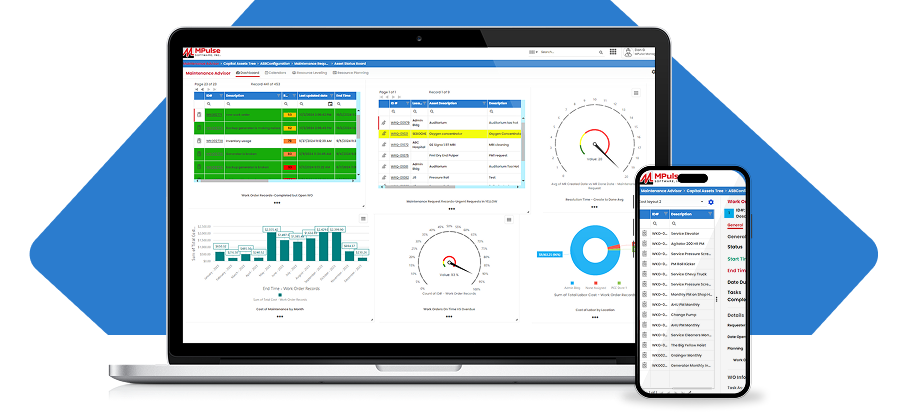Work order management software can dramatically boost your maintenance team’s productivity, helping you streamline tasks, reduce downtime, and stay ahead of equipment issues before they escalate.
Work order management is the backbone of a solid maintenance operation. When it’s done well, it keeps your team on track, your equipment running smoothly, and your facilities operating at peak performance. But when it’s disorganized or outdated, it can lead to delays, miscommunication, and costly downtime.
Whether you’re managing a single facility or juggling multiple locations, improving your work order process is one of the fastest ways to boost productivity and reduce maintenance headaches. Using CMMS is a game-changing way to improve your operations.
Table of Contents
Practical Ways to Use Work Order Management Software
Here are some practical tips to help you turbocharge your work order management with the help of CMMS software.
1. Go Digital with CMMS
If you’re still using paper forms, spreadsheets, or email threads to manage work orders, it’s time for an upgrade. CMMS software digitizes the entire work order process—from creation to completion. With a centralized platform, your team can access work orders from anywhere, update job statuses in real time, and eliminate the confusion that comes with manual systems.
CMMS tools also allow you to store detailed maintenance histories, set priority levels, attach photos or documents, and automate repetitive tasks. Going digital with CMMS software makes everything faster, more accurate, and easier to track.
2. Standardize Work Order Requests
Inconsistent or vague work order submissions waste time and often lead to miscommunication. Create a standardized request form in your CMMS that gathers all the essential details: the issue, asset ID or location, urgency, and any relevant attachments or images. Gathering this information ensures your technicians have the information they need to assess the job correctly and get to work quickly.
If your CMMS allows for customizable request forms, use them to enforce consistency across your team or departments. The more structured your intake process, the smoother the workflow.
3. Set Clear Priorities
Not all work orders are created equal. Some issues can wait; others need immediate attention. Make sure your team has a clear system for ranking work orders based on urgency, safety risk, and operational impact. Assigning clear priority levels within your CMMS helps ensure that high-impact tasks are handled quickly while low-priority items don’t clog up your backlog.
Many CMMS platforms like MPulse let you prioritize tasks, making it easy to sort and schedule work accordingly. This small step can prevent critical issues from falling through the cracks.
4. Automate Preventive Maintenance
One of the biggest bottlenecks in work order management is an overloaded schedule filled with emergency repairs. You can prevent this problem by automating preventive maintenance tasks through your CMMS. Set up recurring work orders based on time, usage, or condition to ensure that critical assets receive regular attention before problems arise.
Automated scheduling through CMMS software keeps reduces equipment failures and helps your team focus on planned work instead of putting out fires.
5. Use Mobile Tools in the Field
Empower your technicians with mobile access to work orders, asset information, and inventory data. Mobile-friendly CMMS software allows team members to update job statuses, log time, upload photos, and even request parts directly from their phones or tablets.
Mobile CMMS tools reduce downtime between tasks, eliminates the need for paper logs, and ensures real-time visibility for managers. That’s essential for teams that operate across large facilities or multiple sites.
6. Track Time and Performance Metrics
To truly turbocharge your work order process, you need to measure it. Track metrics like average completion time, backlog volume, first-time fix rate, and technician productivity. A good CMMS includes built-in reporting dashboards that make it easy to monitor these key performance indicators (KPIs).
Use this data from your CMMS to identify inefficiencies, uncover bottlenecks, and continuously improve your workflow.
7. Keep Inventory in Sync
Nothing stalls a work order faster than waiting on parts. Make sure your inventory system is connected to your work order process through your CMMS. A good CMMS tracks part usage, alerts you when stock is low, and helps automate reordering. As a result, your team has what they need, when they need it.
Syncing inventory with your CMMS also improves cost tracking and helps with budgeting and forecasting.
8. Create a Clear Approval and Escalation Workflow
Not every maintenance request needs to go straight to a technician. For larger repairs or costly projects, set up a clear approval process within your CMMS. A clear workflow helps manage budgets, reduces unauthorized work, and ensures that requests are properly vetted before work begins.
Also, define an escalation process for urgent issues. Whether it’s safety-related or mission-critical, having a plan to fast-track certain work orders in your CMMS helps your team respond appropriately under pressure.
9. Train Your Team Consistently
Even the best CMMS system falls short if your team doesn’t know how to use it. Provide training on how to submit, manage, and close work orders using the CMMS platform. Offer refresher sessions and updates as new features are added. A well-trained team works faster, makes fewer mistakes, and feels more confident using the software.
10. Review and Optimize Regularly
Your work order process should evolve as your operations grow. Use your CMMS to regularly review workflows, reporting data, and user feedback. Are certain types of tasks taking too long? Are some assets generating too many work orders? Use your CMMS insights to identify areas for improvement and optimize accordingly.
Take Control with Work Order Management Software
Work order management doesn’t have to be a headache. With the right tools and a well-structured process, you can streamline operations, improve technician efficiency, and reduce downtime. A powerful CMMS platform is the key to unlocking these improvements, helping you manage everything from work orders to preventive maintenance, inventory, and reporting—all in one place.
If you’re ready to take control of your maintenance operations, start by implementing these strategies and putting your CMMS to work. Small changes can lead to big gains—and a well-managed workflow today means a more productive tomorrow.
Get started today. Contact us.






